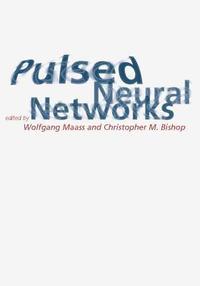
- Format
- Inbunden (Hardback)
- Språk
- Engelska
- Antal sidor
- 377
- Utgivningsdatum
- 1998-11-01
- Upplaga
- illustrated ed
- Förlag
- Bradford Books
- Medarbetare
- Sejnowski, Terrence J. (foreword)
- Illustratör/Fotograf
- 195
- Illustrationer
- 195
- Dimensioner
- 266 x 190 x 31 mm
- Vikt
- Antal komponenter
- 1
- Komponenter
- xxix, 377 p. :
- ISBN
- 9780262133500
- 1065 g
Pulsed Neural Networks
Kundrecensioner
Fler böcker av författarna
-
Pattern Recognition and Machine Learning
Christopher M Bishop
-
Deep Learning
Christopher M Bishop, Hugh Bishop
-
Neural Networks for Pattern Recognition
Christopher M Bishop
-
Semantic Technologies in Content Management Systems
Wolfgang Maass, Tobias Kowatsch
Recensioner i media
" Pulsed Neural Networks is a welcome new breeze in the field ofneuronal modeling. At last, the central issue of timing in neuronalnetwork function is treated in its full depth--a must for anyoneseriously interested in CNS function." Rodolfo Llinas, Department of Physiology and Neuroscience, New York University Medical School
Övrig information
Wolfgang Maass is Professor at the Institute for Theoretical Computer Science, Technische Universitat Graz. Christopher M. Bishop is Assistant Director at Microsoft Research, Cambridge, and Professor of Computer Science at the University of Edinburgh.
Innehållsförteckning
Basic concepts and models. Part 1 Spiking neurons: the problem of neural coding; neuron models; conclusions. Part 2 Computing with Spiking neurons: introduction; a formal computational model for a network of Spiking neurons; McCullogh-Pitts neurons versus Spiking neurons; computing with temporal patterns; computing with a space-rate code; computing with firing rates; firing rates and temporal correlations; networks of Spiking neurons for storing and retrieving information; computing on Spike trains; conclusions. Part 3 Pulse-based computation in VLSI neural networks: background; pulsed coding - a VLSI perspective; a MOSFET introduction; pulse generation VLSI; pulsed arithmetic in VLSI; learning in pulsed systems; summary and issues raised. Part 4 Encoding information in neuronal activity: introduction; synchronization and oscillations; temporal binding; phase coding; dynamic range and firing rate codes; interspike interval variability; synapses and rate coding; summary and implications. Part 5 Building silicon nervous systems with dendritic tree neuromorphs: introduction; implementation in VLSI; neuromorphs in action; conclusions. Part 6 A pulse-coded communications infrastructure: introduction; neuromorphic computational nodes; neuromorphic VLSI neurons; address event representation (AER); implementations of AER; silicon cortex; functional tests of silicon cortex; future research on AER neuromorphic systems. Part 7 Analog VLSI pulsed networks for perceptive processing: introduction; analog perceptive nets communication requirements; analysis of the NAPFM communication system; address coding; silicon retina equipped with the NAPFM communication system; projective field generation; description of the integrated circuit for orientation enhancement; display interface; conclusion. Part 8 Preprocessing for pulsed neural VLSI systems: introduction; a sound segmentation system; signal processing in analog VLSI; Palmo - pulse based signal processing; conclusions; further works. Part 9 Digital simulation of Spiking neural networks: introduction; implementation issues of pulse-coded neural networks; programming environment; concepts of efficient simulation; mapping neural networks on parallel computers; performance study. Part 10 Populations of Spiking neurons: introduction; model; population activity equation; noise-free population dynamics; locking; transients; incoherent firing; conclusions. Part 11 Collective excitation phenomena and their applications: introduction; synchronization of pulse coupled oscillators; clustering via temporal segmentation; limits on temporal segmentation; image analysis; solitary waves; the importance of noise; conclusions. Part 12 Computing and learning with dynamic synapses: introduction; biological data on dynamic synapses; quantitative models; on the computational role of dynamic synapses; implications for learning in pulsed neural nets; conclusions. Part 13 Stochastic bit-stream neural networks: introduction; basic neur
